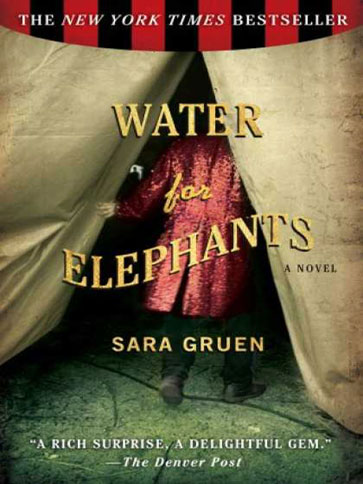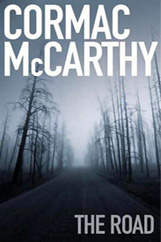Water for Elephants
Sara Gruen
 A 90-year-old man─or is he 93?─narrates the story of his one summer as a veterinarian with the Benzini Brothers Most Spectacular Show on Earth during the summer of 1931 in depression-era America. Jacob Jankowski resides in an assisted living home with other elderly people, many of whom require more medical attention than he. He is quite mentally astute for his age, yet because of his age, most of the people in charge of the facility treat him as mentally incompetent, all but Rosemary, a forty-seven-year-old nurse, who treats him and the rest of the patients/residents with the loving care, dignity, and respect they deserve as human beings. But she is moving away and will be quitting the facility, which in the end leads to Jacob’s decision to continue his life─what little he may have left─in dignity.
A 90-year-old man─or is he 93?─narrates the story of his one summer as a veterinarian with the Benzini Brothers Most Spectacular Show on Earth during the summer of 1931 in depression-era America. Jacob Jankowski resides in an assisted living home with other elderly people, many of whom require more medical attention than he. He is quite mentally astute for his age, yet because of his age, most of the people in charge of the facility treat him as mentally incompetent, all but Rosemary, a forty-seven-year-old nurse, who treats him and the rest of the patients/residents with the loving care, dignity, and respect they deserve as human beings. But she is moving away and will be quitting the facility, which in the end leads to Jacob’s decision to continue his life─what little he may have left─in dignity.
There is a circus that has come to town. It is so close to the facility that the big tent and other goings on can be observed from the window. All of the old people reminisce about their experiences in their youth going to the circus. One old man and a newcomer to the home, Mr. Joseph McGuinty, who is considerably younger than Jacob, brags about having worked in a circus, carrying “water for elephants.” Jacob becomes upset because he knows Mr. McGuinty is lying to attract the attention of the other residents; and the memories of the truth of his past life are triggered.
Flashback to young Jacob Jankowski, a veterinary student at Cornell University in his last year! Just before he is scheduled to take his final exams, after which he will graduate and receive his degree, both his parents are killed in an automobile accident. After their burial and after learning the truth of his financial situation, Jacob is unable to focus. He leaves the exam room and leaves Cornell. Distraught, he leaves with only the clothes on his back and no money in his pocket.
Because of the Depression, people were unable to pay for his father’s services; and his father, also a veterinarian, worked for people even though they could not pay him, taking whatever they could give him─eggs, chickens, whatever they had. Therefore, his parents had nothing to leave their son but debts. To pay his tuition, the house had been mortgaged.
So not being able to focus, he leaves without ever putting pen to paper. Without aim or destination, he walks and soon finds himself beside the railroad tracks, when along comes a train. Like a hobo, he hops the train with no idea where he is going. He soon learns this is a circus train and is not tossed off it because the Benzini Brothers, whose circus it is, discover he is a veterinarian; and his services are badly needed.
Working as a veterinarian that summer leads to all kinds of experiences, tantamount among them which are falling in love, getting married, and eventually working with the circus’s one elephant.
After his summer with the Benzini Brothers, he is hired by Ringling Brothers. He, along with his wife, and his growing family, spends seven years as a circus veterinarian. He then becomes the veterinarian for the Brookfield Zoo in Chicago. His seven years experience with exotic animals and his degree, in addition to bringing an elephant with him, insures him the job when the former vet suddenly dies.
Jacob, ninety years old─or is he 93? he asks himself, recognizing that his old age has caused some memory loss─struggles to hold onto his humanity and his dignity as long as he can. It is he who in his reminiscences about his circus life, his friendships, and his deep love for his wife narrates the story. The reader falls in love with Jacob and develops an even greater love and respect for “old folks.” Sara Gruen’s novel awakens the reader to the often mistreatment of and disrespect for the elderly, evoking empathy in their cause. Especially hurtful is seeing how their own families, their own children, mistreat them, or forget about them. Old people are still human beings. In many cases, their bodies may be broken, their hands and fingers gnarled, but in all cases, there is a brain inside their heads as Jacob proves. In having Jacob tell his story inWater for Elephants, the author informs us of this and reminds us of the fact that we will grow old someday. At the same time Sara Gruen affords us a moving and delightful read─so do not be misled by the title.
Reviewed by Lee L. Peoples


